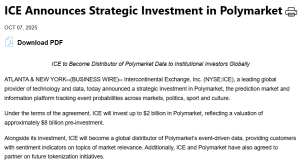- What’s Midnight?
- Hoskinson’s true dedication
The founder of Cardano, Charles Hoskinson, has been rumored to be leaving the project. Claims that he has moved on to concentrate only on Midnight have been circulating on social media, but that is not accurate. Examining Hoskinson’s posts from the previous six months paints a completely different picture.
What’s Midnight?
Midnight, Cardano’s privacy-focused sidechain project, makes up about 60% of his content. It should come as no surprise that Midnight has its own foundation, a strong marketing department, and actively pursues partnerships. About 25% of his posts are solely about Cardano, including discussions about governance, advancements in scalability and community milestones. The remaining 15% connects the two, demonstrating how Cardano’s fundamental infrastructure and Midnight’s features work together.
ADA/USDT Chart by TradingViewMidnight is built on top of Cardano, not in competition with it. The architecture demonstrates that it is a shared experience for every builder on Cardano, as Hoskinson himself stated. Recent increases in Hydra activity and Cardano wallet addresses indicate that the ecosystem as a whole is heading precisely in this direction, growing modularly rather than completely reimagining itself.
Hoskinson’s true dedication
The recent engagement of Hoskinson still demonstrates dedication rather than disengagement. He actively participates in discussions with detractors, presented fresh DeFi demonstrations in November and promoted the Omega road map in September, which emphasizes long-term scalability and governance evolution. The conflict with the Cardano Foundation is typical of developing decentralized ecosystems, not an indication of abandonment.
Rather than breaking apart, the ecosystem is diversifying. Cardano’s next phase includes Midnight, Hydra and the forthcoming governance frameworks. Practical advancements like native stablecoins, improved support for CNTs (Cardano Native Tokens) and stronger DeFi layers are what the ecosystem needs the most right now. That is how Cardano succeeds: by executing where it counts rather than by panicking over leadership focus.
Source: https://u.today/charles-hoskinson-abandons-cardano-all-you-need-to-know


